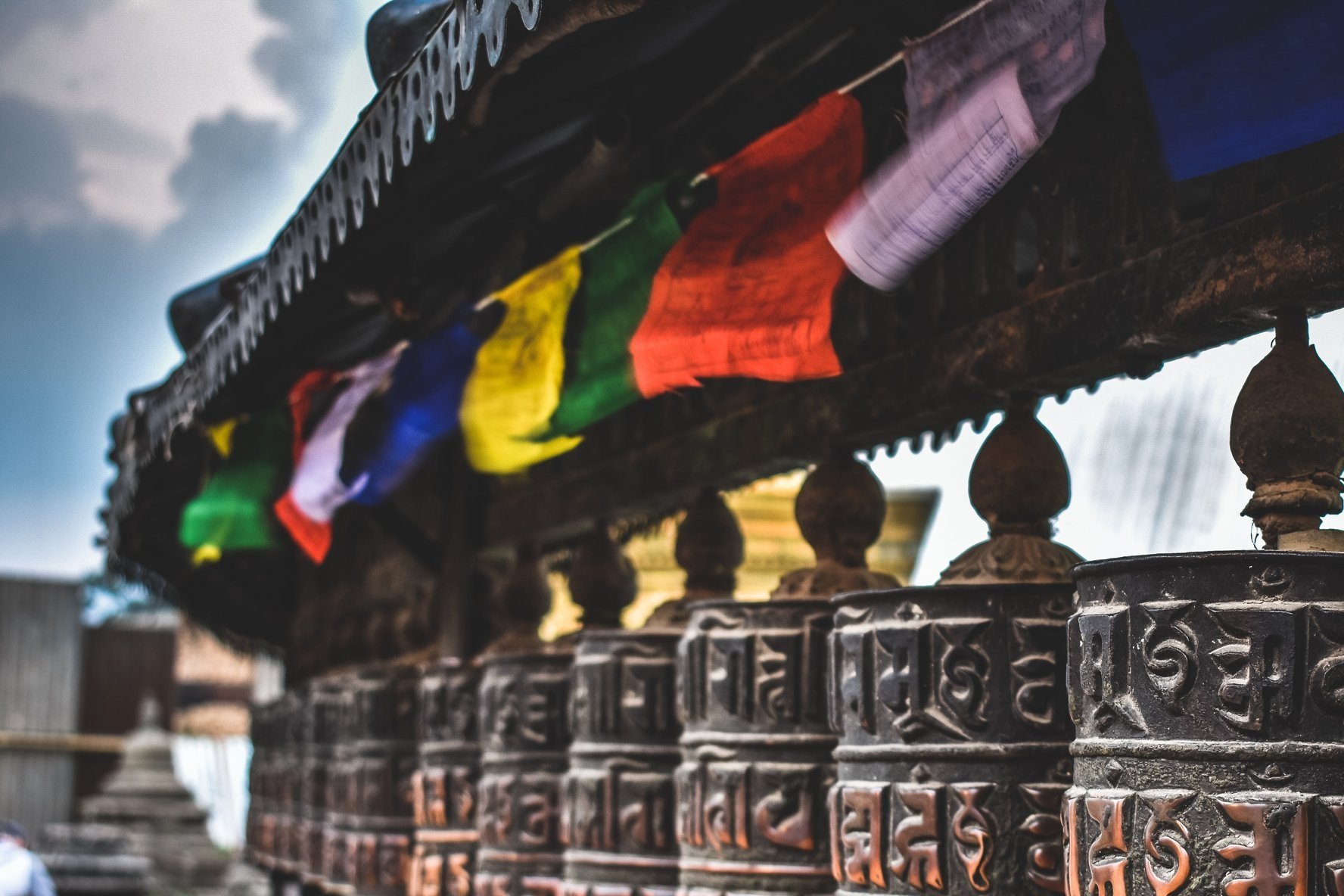
Traces of Tibet
Service Learning in Nepal
Tibet and Nepal, though lying on opposite sides of the Himalayas, have strong connections that run through history. Nepal has long been an important trade hub that Tibetan merchants frequented. Buddhism, which sprouted in Lumbini in southern Nepal, later became the dominant religion in Tibet. Since the mid-1950s, an increasing number of Tibetans have settled in Nepal.
Today, Nepal is home to the greatest number of Tibetans outside of Tibet. In this program, students will spend time in and around the Kathmandu Valley, Nepal’s capital and home to a significant Tibetan community. They will explore the state of Tibetan culture and daily livelihood in Kathmandu and record their observations in a series of photos and a shot documentary. Students will study Tibetan religious art, learn about the development of Tibetan Buddhism in Nepal, visit local Tibetan carpet workshops to better understand the livelihoods of Tibetans, and last but not least, further bond with the local community through a homestay. Students will also take a high-altitude trek to appreciate the pristine beauty of the Himalayas.
Sample Itinerary
Day 1
Arrive in Kathmandu and meet your program leaders at the airport. Transfer to your hotel and check in. Enjoy a traditional Nepali welcome dinner.
Day 2
After breakfast, get a sense of the historical and cultural depth of the city by a guided tour. Visit the magnificent temple of Lord Pashupatinath, dedicated to the Hindu god of destruction, Lord Shiva, this temple is regarded as the most sacred temple in Nepal. Then, go on a mini kora around the Goudhath stupa, the imposing landmark in Kathmandu and a center of Tibetan Buddhism.
After lunch, meet your host families and settle in.
Day 3-Day 4
Students will learn about the basics of photography, dive into storytelling techniques, and study multiple case studies in our Photography boot camp in the mornings to get ready for their photography project on Tibetan community life.
In the afternoons, get acquainted with Tibetan Buddhist philosophy, practice, and art by visiting major Tibetan Buddhist monasteries. Attend a Thangka (Tibetan Buddhist painting) master class to experience this highly esteemed art practice and a method of meditation in Tibetan Buddhism. Don’t forget to take photos on your way!
Day 5
Visit a Tibetan rugs workshop to learn about one of the major industries that Tibetans are involved in in Nepal. In Nepal, the rug business is one of the largest industries in the country and there are many rug exporters. Tibetan rugs or carpets are known around the world for their quality and unique knotting method. Interview the workshop owner and workers about their business model and how the rug business has impacted their livelihoods.
Learn about the different steps of making a Tibetan rug. Try weaving a pattern under the guidance of a seasoned carpet weaver.
Day 6-7
Visit a Tibetan community school. Sit in one of their morning classes to get a sense of their curriculum and learning environment. After lunch, facilitate English workshops or play teambuilding games with the students.
In the next day, engage in a school beautification project with local students. Tasks may include painting murals on old school walls, building a rainwater harvesting pond for the school, or decorating the school library. In the afternoon, bond with the students by putting together a talent show as a group.
Day 8
Take a high-altitude trek to isolated Tibetan communities. Admire the pristine beauty of the Himalayan mountains while getting a sense of life in rural communities.
Transfer back to Kathmandu city proper at the end of the day.
Day 10
Present your photo series to your fellow classmates, teachers, and host families. Share what you have learned, what you plan to bring back, and what you hope to achieve.
Enjoy a lunch buffet to celebrate and express gratitude to teachers and host families. Then, hug goodbye, say “tashi delek”, and take a flight home.
Day 9
Enjoy a relaxed day with the host family. Learn how to make Tibetan butter tea or milk tea. Try making your own tsampa balls with barley flour, salt, butter, and water. Help host family with chores around the house. Also, take time to go through the photos taken in the past few days. Select your favorites and arrange them into a series. In the evening, walk around town or try the Tibetan circle dance in the town square with the host family.









Ask us about school trips
info@beyondclassrooms.org

